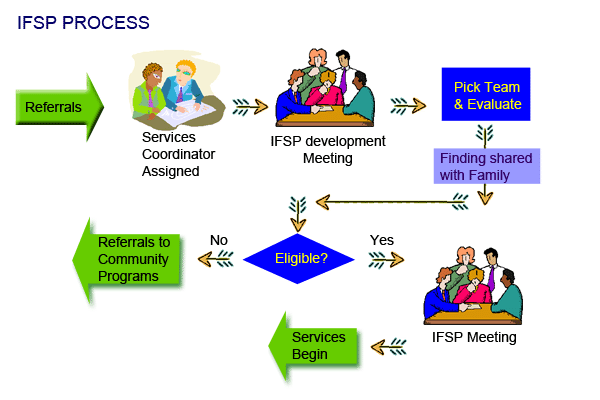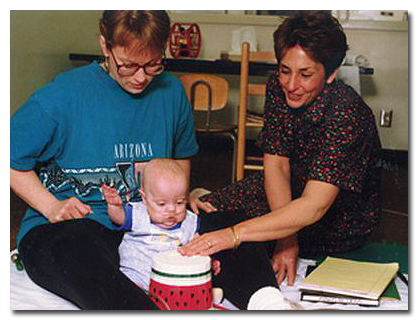Writing the Individualized Family Service Plan (IFSP)
What Is It?
If your child is in school and requires special education services, he’ll have an Individualized Education Program (IEP). But it is also legally required that younger children have access to needed services and support. This is where the Individualized Family Service Plan (IFSP) comes into play. The IFSP is a written document that all children have when they qualify for Early Intervention (EI). (Early Intervention is the version of special education for younger children.) The document is customized to your child’s specific needs. However, unlike the IEP, the IFSP also takes into account the needs of your entire family insofar as familial support is crucial to attaining a favorable outcome for your child.
Assessment
Before the IFSP is written, the members of your child’s Early Intervention team will conduct assessments. A speech-language pathologist (SLP) and other professionals will evaluate your child to determine his current level of development and his needs. The team will also interview you and the rest of your family members to ask about your concerns and your goals for your child. Prepare for the discussion by brainstorming lists of your concerns and any questions you might have. It’ll give you an excuse to finally put that trendy new smartphone/tablet to good use.
A Family-Oriented Approach
One of the key differences between an IEP and an IFSP is the family-oriented approach of the IFSP. The Early Intervention team is not only concerned about your child’s speech disorder and treatment needs, but also about the services that your whole family needs in order to support your child’s progress. The IFSP must identify those needs. For example, your family might benefit from training that is geared toward helping your child’s specific disability, or you might need information regarding financial assistance for treatment programs.
Key Components
When it’s time to sit down and actually write the document itself, the IFSP team (and you) must make sure that certain components are included. The IFSP must identify your child’s current development and specific areas in which he needs help. The document discusses your family’s concerns, priorities, and needed resources. It lists expected outcomes for the entire family.
The IFSP identifies the services that your child will receive and where he will receive them. The keywords here are “in the natural environment.” IFSPs strive to provide services in the child’s natural environment, such as his home or community areas. If services are to be provided elsewhere, a statement explaining the reason for it must also be included. The list of services must be specific. For example, your child might receive three speech therapy sessions per week, each lasting an hour, on a one-on-one basis. The IFSP identifies who will be responsible for paying for services and the name of the service coordinator who is responsible for supervising the IFSP’s implementation. Finally, the IFSP also identifies the steps that will be taken to transition your child out of Early Intervention and into special education when it is applicable.




